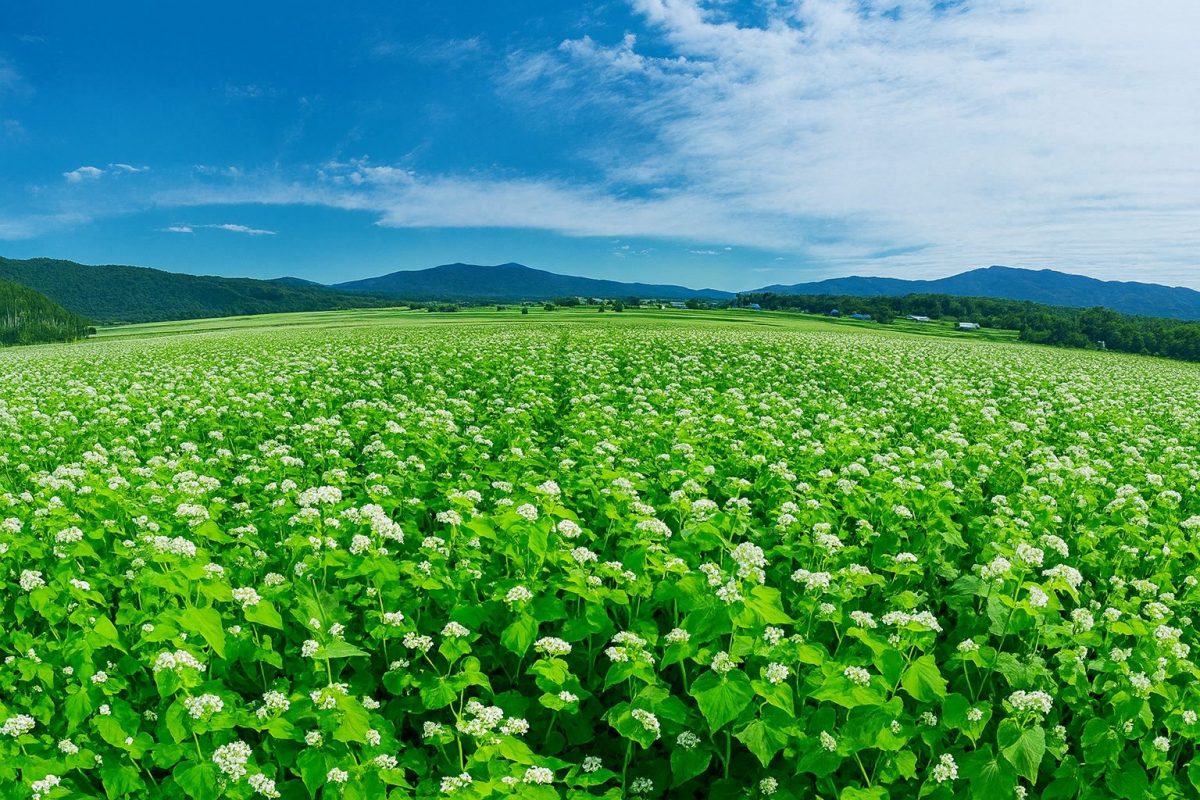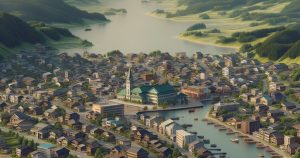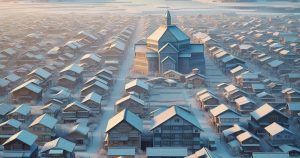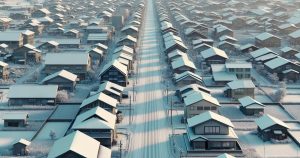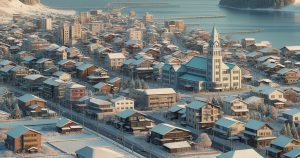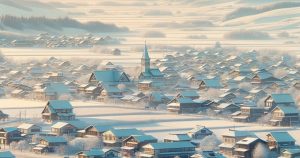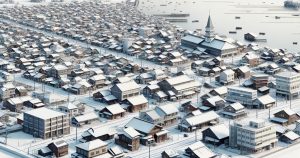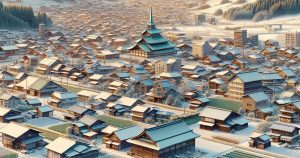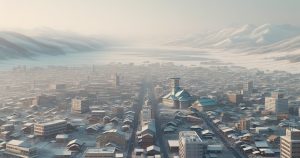| 人口 | 1,215 人 |
|---|---|
| 面积 | 767.04 km² |
| 人口密度 | 1.58 人/km² |
Located in the western part of the Kamikawa Subprefecture, Hokkaido, Horokanai Town is known as one of the coldest inhabited places in Japan. Formerly part of Sorachi Subprefecture, it was transferred to the jurisdiction of Kamikawa in 2010 due to its close geographical and economic ties with the region. The town’s development began during the pioneering era with the opening of the Fukagawa–Nayoro railway line, which connected remote settlements across northern Hokkaido. Today, Horokanai has become famous throughout Japan as the “home of buckwheat,” boasting the largest soba (buckwheat) production area and harvest volume in the country. Agriculture remains the backbone of its economy, with high-quality soba and soybeans thriving under the region’s cold, dry climate.
Surrounded by rich forests and vast mountain ranges, Horokanai offers spectacular scenery throughout the year, from the verdant summers to the snow-covered winters. In the northern part of the town lies Lake Shumarinai, Japan’s largest artificial lake, which serves as a major water source and a scenic destination for fishing and camping. Winter dominates the landscape—annual snowfall often exceeds two meters, blanketing the town in a vast white world. The event known as “The Gathering to Listen to the Whisper of Angels” celebrates this season, when shimmering diamond dust sparkles in the freezing air. Despite the harsh climate, Horokanai’s residents have inherited the pioneering spirit of their ancestors, preserving their warm hospitality, distinct dialect, and traditional way of life unique to northern Hokkaido.
CULTURE & TRADITIONS
Horokanai’s culture is deeply rooted in the pioneering spirit that shaped the town more than a century ago. Established in 1918, the community grew through the hard work of early settlers who cultivated the land and developed the region’s rich agricultural base. Today, farming—especially buckwheat and soybeans—remains a source of pride. The town’s famous Horokanai Shin Soba Festival draws visitors from all over Japan, celebrating the year’s first soba harvest. Another highlight is the Horokanai Soybean Festival, where local products such as tofu, miso, and natto are showcased and sold directly by producers.
The townspeople still speak in a Hokkaido dialect and maintain a lifestyle based on mutual cooperation. During the long winters, residents work together on snow removal and community activities. In spring and summer, festivals and floral events bring color and vitality to the town. Education also plays a role in preserving local identity—at Horokanai High School, soba-making classes are part of the regular curriculum, teaching students about the culture and craftsmanship that define their hometown. These traditions, combined with the striking natural beauty of the land, make Horokanai not just a cold region, but a living example of harmony between people and nature.
LOCAL SPECIALTIES
- Horokanai Soba (Buckwheat Noodles): Japan’s largest buckwheat production area, known for soba with a rich aroma and firm texture produced by sharp temperature differences. Visitors can enjoy freshly made soba at Michi-no-Eki Mori to Mizuumi no Sato Horokanai and at Seiwa Onsen Luonto.
- Horokanai Soybeans: The pride of local agriculture. These high-quality soybeans are processed into tofu, miso, soy milk, and natto. During the annual Soybean Festival, visitors can sample and purchase freshly made products directly from farmers.
- Haskap Berries: A rare berry native to Hokkaido, cultivated in the cool environment near Lake Shumarinai. Its perfect balance of sweetness and tartness makes it ideal for jams, wines, and desserts.
- Garlic: Grown in the crisp northern climate, Horokanai’s garlic is pungent and aromatic. Rich in antioxidants, it’s used both in cuisine and as a health supplement throughout Japan.
ANNUAL EVENTS
- The Gathering to Listen to the Whisper of Angels (February): Held near Lake Shumarinai on extremely cold nights below –20°C, this magical event celebrates the beauty of diamond dust glittering in the air under the northern sky.
- Lake Shumarinai Festival (Early August): A summer celebration featuring fireworks, canoeing, camping, and food stalls along the lakeshore. The festival highlights the harmony between people and the pristine environment.
- Horokanai Shin Soba Festival (Late August to Early September): The town’s signature event, where soba masters from across Japan gather to demonstrate soba-making techniques and serve freshly made noodles.
- Seiwa Art Festival (Mid-August): A local art and cultural event showcasing works by regional artists and children, fostering creativity and community connection.
- Horokanai Christmas Illumination (December): Streets and public spaces such as the Michi-no-Eki Horokanai are adorned with festive lights, creating a dreamlike winter atmosphere.
ACCESS
- By Air: The nearest airport is Asahikawa Airport, about 90 km away. It offers direct flights from major Japanese cities. Travel time by car is approximately 1.5 hours via National Route 275.
- By Bus: The JR Hokkaido Bus Fukagawa–Nayoro Line connects Horokanai with Fukagawa and Nayoro. The Horokanai Koryu Plaza serves as the central bus terminal.
- By Car: From Asahikawa: about 1.5 hours via National Route 275. From Sapporo: about 3 hours via the Dōō Expressway and National Route 275. Winter driving requires caution due to heavy snow.
TOURIST SPOTS
- Seiwa Onsen Luonto – A natural hot spring resort surrounded by forests, known for its clear waters and mineral-rich deposits that tint the baths golden brown.
- Lake Shumarinai – Japan’s largest man-made lake and a popular destination for fishing and camping. It is also known as a sanctuary for the legendary fish, the “Ito” (Japanese huchen).
- Horotachi National Ski Area – A local ski resort famous for its fine powder snow. The gentle slopes are perfect for families and beginners.
- Horokanai Town Folk Museum – Displays artifacts, historical records, and exhibits related to the town’s pioneering era and the former Fukagawa–Nayoro railway line.
- Michi-no-Eki Mori to Mizuumi no Sato Horokanai – A roadside rest area offering local soba dishes, agricultural products, and travel information. A must-stop for visitors exploring northern Hokkaido.
